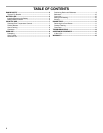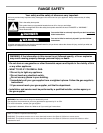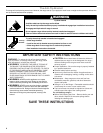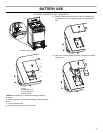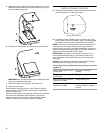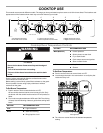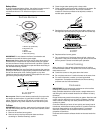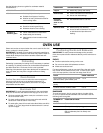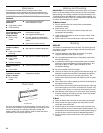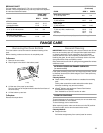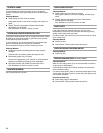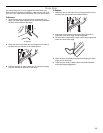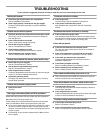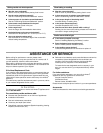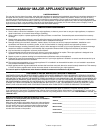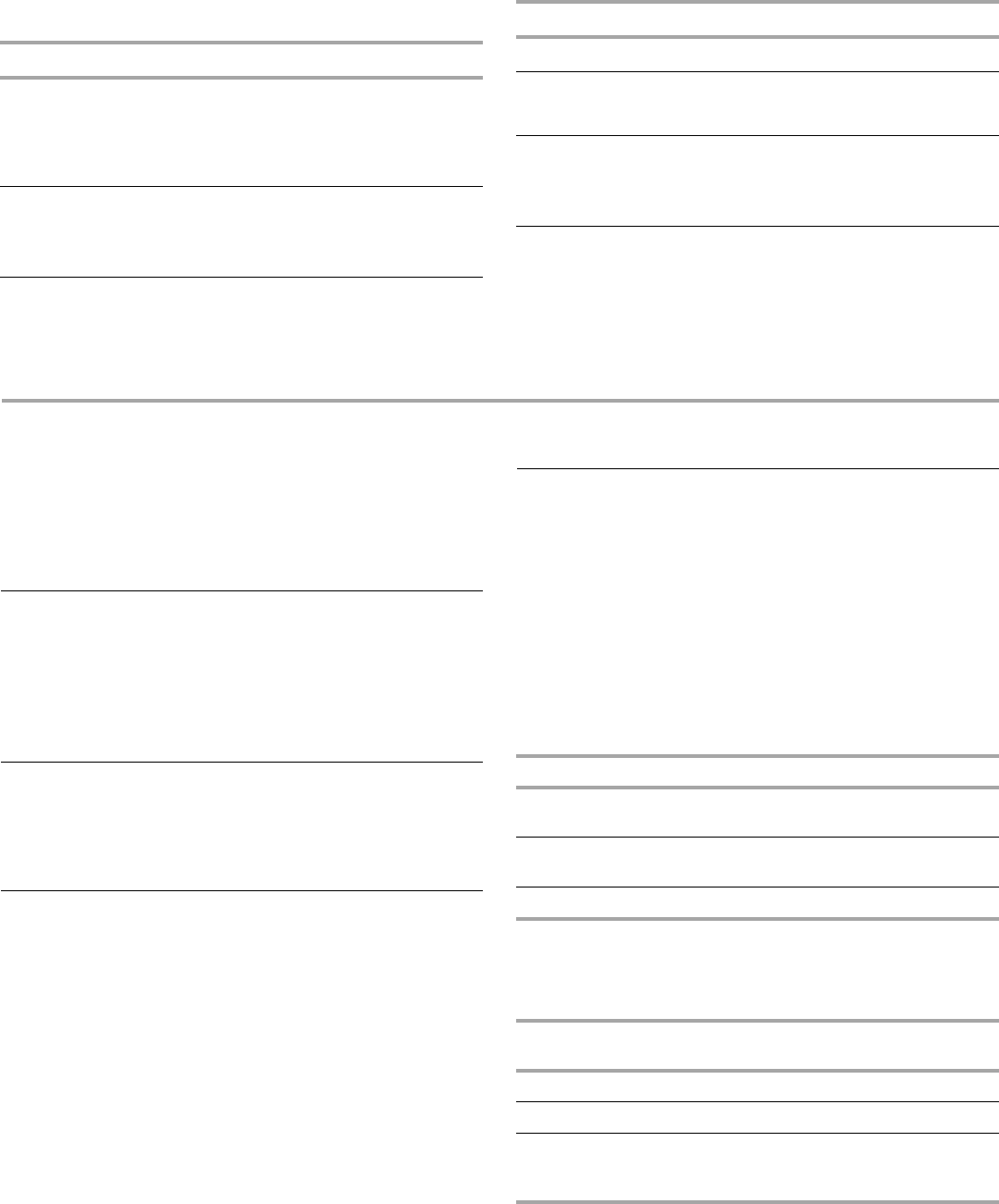
9
Use the following chart as a guide for cookware material
characteristics.
OVEN USE
Odors and smoke are normal when the oven is used the first few
times, or when it is heavily soiled.
IMPORTANT: The health of some birds is extremely sensitive to
the fumes given off. Exposure to the fumes may result in death to
certain birds. Always move birds to another closed and well-
ventilated room.
Preheating
Preheating is necessary for baking It is not necessary to preheat
for roasting. To preheat, set the oven to the desired temperature
and allow about 8 to 15 minutes for the oven to preheat.
Selecting a temperature higher than desired will not preheat the
oven any faster, and may have a negative effect on baking
results.
Oven Control
The Oven Temp knob is used to select the oven temperature.
Always turn this knob just to the desired temperature. To
accurately set the oven temperature, do not turn to a higher
temperature and then back.
Aluminum Foil
IMPORTANT: To avoid permanent damage to the oven bottom
finish, do not line the oven bottom with any type of foil or liner.
■ On those models with bottom vents, do not block or cover
the oven bottom vents.
■ For best cooking results, do not cover entire rack with foil
because air must be able to move freely.
■ To catch spills, place foil on rack below dish. Make sure foil is
at least ¹⁄₂" (1.3 cm) larger than the dish and that it is turned
up at the edges.
Positioning Racks and Bakeware
IMPORTANT: To avoid permanent damage to the porcelain
finish, do not place food or bakeware directly on the oven door or
bottom.
RACKS
■ Position racks before turning on the oven.
■ Do not move racks with bakeware on them.
■ Make sure racks are level.
For best performance, cook on one rack. Place the rack so the
top of food will be centered in the oven. To move a rack, pull it
out to the stop position, raise the front edge, then lift out.
BAKEWARE
To cook food evenly, hot air must be able to circulate. Allow
2" (5 cm) of space around bakeware and oven walls. Use the
following chart as a guide.
COOKWARE CHARACTERISTICS
Aluminum
■ Heats quickly and evenly.
■ Suitable for all types of cooking.
■ Medium or heavy thickness is best for
most cooking tasks.
Cast iron ■ Heats slowly and evenly.
■ Good for browning and frying.
■ Maintains heat for slow cooking.
Ceramic or
Ceramic glass
■ Follow manufacturer’s instructions.
■ Heats slowly, but unevenly.
■ Ideal results on low to medium heat
settings.
COOKWARE CHARACTERISTICS
Copper
■ Heats very quickly and evenly.
Earthenware
■ Follow manufacturer’s instructions.
■ Use on low heat settings.
Porcelain
enamel-on-
steel or cast
iron
■ See stainless steel or cast iron.
Stainless steel
■ Heats quickly, but unevenly.
■ A core or base of aluminum or copper
on stainless steel provides even
heating.
FOOD RACK POSITION
Large roasts, turkeys, angel food, bundt
and tube cakes, quick breads, pies
1 or 2
Yeast breads, casseroles, meat and
poultry
2
Cookies, biscuits, muffins, cakes 2 or 3
NUMBER OF
PAN(S)
POSITION ON RACK
1 Center of rack.
2 Side by side or slightly staggered.
3 or 4 Opposite corners on each rack. Make sure
that no bakeware piece is directly over
another.




